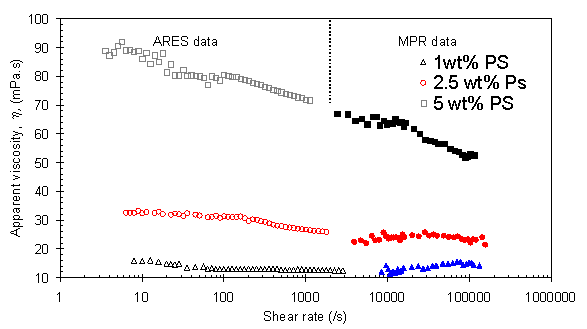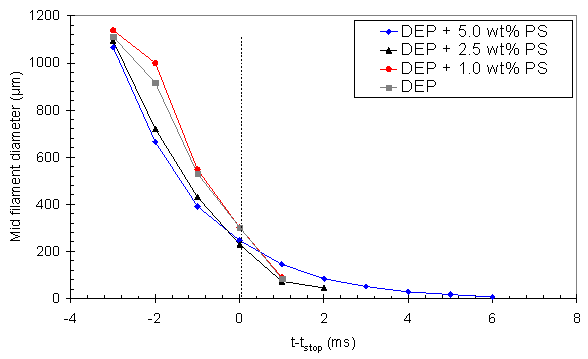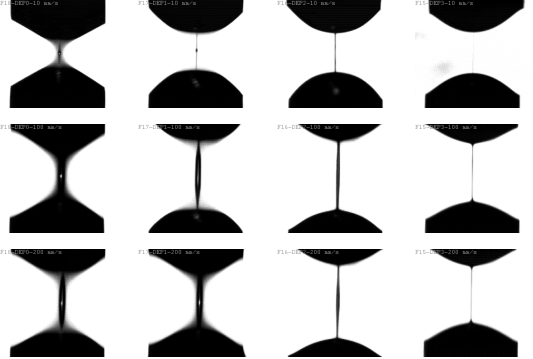Rheology
Controlling droplet formation and in particular, the break up and corresponding tail or ligament formation is dependent on the rheology of ink as it flows through the nozzle. One important part of inkjet printing technology is the ink and its physical properties (viscosity, viscoelasticity and surface tension). The viscosity and elastic stresses resist the necking motion of the liquid filament whereas surface tension is responsible for the spherical shape of the liquid drop emerging from the nozzles. Controlling droplet formation and in particular, the break up and corresponding tail or ligament is highly dependent on the rheology of ink as it flows through the nozzle.
We are investigating the rheology of inkjet fluids using an in-house built MultiPass Rheometer (MPR) at very high shear rates similar to that experienced by inks in modern inkjet printing usually of the order 105 s-1. The MPR being an enclosed volume Rheometer is also capable of handling volatile fluids.
The figure below shows the effect of Polystyrene (PS) concentration on the rheology of Di-ethyl phthalate (DEP) solvent over a wide range of shear rates at 25°C. DEP solvent on its own is Newtonian with a viscosity of 10 mPa.s at 25°C. Addition of polymer changed both the viscosity and the shear thinning behaviour of the solvent. Measurement at low shear rates (using ARES Rheometrics) gives a zero shear viscosity which may be important in relation to base characterisation of the ink, where as high shear rate measurement (using MPR) gives realistic rheological behaviour (shear thinning or strain hardening) as experienced by the fluids during printing.

Extensional flow
Measurement of the extensional flow characteristics of inkjet fluids is important to understanding the detailed mechanism of droplet formation. We have also used the MPR in a filament stretching experiments to investigate the effect of viscosity, viscoelasticity, and polymeric additives (concentration and molecular weight) on the filament thinning and subsequent break-up over a wide range of imposed strain rates. By analysing the filament diameter after stretching, it was possible to extract the characteristic time constant of the elastic fluid or the extensional viscosity of the Newtonian fluid. Analysis of filament shape using a high-speed camera gave detailed insight into the filament break-up mechanism. Tri was able to compare and validate his results with those obtained from real inkjet printer heads.
The movie (not in real time) below shows the sequence of images illustrating filament formation and subsequent thinning during and after stretching and finally droplet formation. In this example, the ink (0.3 mm height and 1 mm width) was initially placed between the top and bottom pistons (~1.2 mm diameter). The two pistons were then moved apart by 0.5 mm on each side at the speed of 100 mm/s resulting in filament formation.

By analysing the images, we are able to follow the thinning of the mid-filament diameter. The figure below shows the effect of PS concentration (1.0, 2.5 and 5.0 wt%) on the filament thinning profile during and after streching. The thinning of the filament after the piston is stopped is driven mainly by the viscosity, visco-elasticity and surface tension forces. At low concentration of PS, the filament decreases linearly with time. With increased PS concentration, the diameter decreased exponentially.

We are also investigating the mechanism of filament break up by analysing the filament shape using a high-speed camera. The Photographs below show images obtained just before the filament break-up for various PS concentration and over a wide range of initial imposed filament stretch velocities (strain rates).

Return to:

